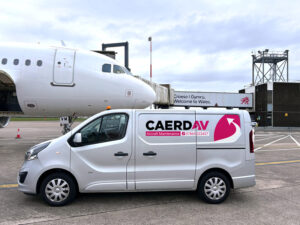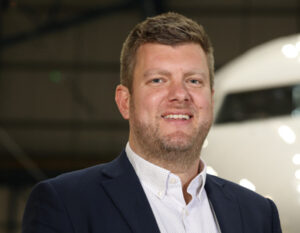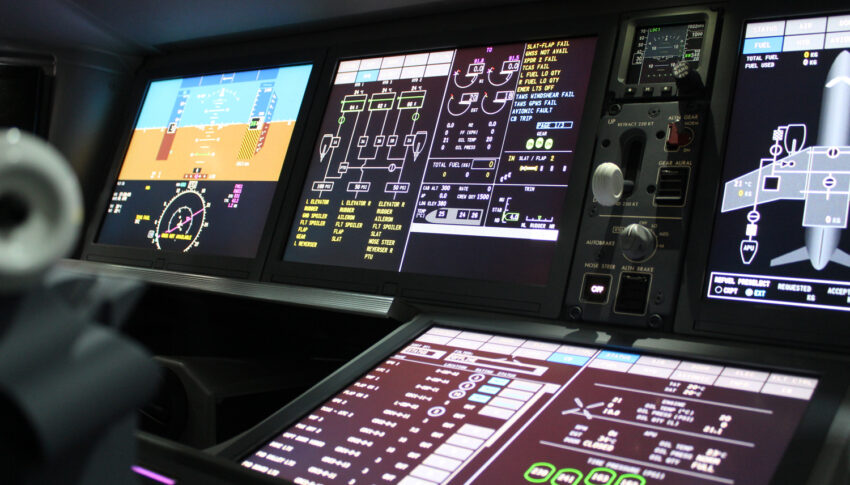Aircraft arriving at the gate need to be checked and cleared before their next flight. New technologies, including AI, are helping to improve the process, as Bernie Baldwin reports.
Even before the advent of low-fare airlines and their tight schedules, aircraft turnarounds were a vital element of airline operations. Everything has to be done to ensure the aircraft leaves according to the next flight’s timetable, whether short-haul or long-haul.
Meeting that challenge includes carrying out planned maintenance checks and, if necessary, replacing parts on the ramp. There may also be a need for unplanned checks and repairs, which can upset the schedule, and being ready to cope with those situations is a vital attribute for an airline’s maintenance, repair and overhaul (MRO) departments or their third-party MRO providers.
Erik Blaauwbroek, head of continuing airworthiness at SAMCO Aircraft Maintenance, notes that these tasks — planned maintenance and reactive maintenance — are the key elements of line maintenance. “The former is managed by the airline’s Continuing Airworthiness Management Organisation (CAMO) which instructs the MRO to perform certain tasks at a specific date and time. These tasks are limited to work that can be performed whilst keeping the aircraft in a flight capable condition, such as having no extensive removals of panels and equipment,” he explains.
“Reactive maintenance is performed by the technician whenever the flight crew report that a problem/defect occurred during flight. This is recorded and the technician will use the relevant troubleshooting aid and procedures to ensure that the aircraft remains in a serviceable condition and is ready for the next flight,” Blaauwbroek adds.
 Also identifying the key elements of line maintenance is Richard Pitts-Robinson, commercial director for Caerdav. “The three main things we focus on to ensure we deliver efficient line maintenance are communication, response times and on-time performance,” he declares.
Also identifying the key elements of line maintenance is Richard Pitts-Robinson, commercial director for Caerdav. “The three main things we focus on to ensure we deliver efficient line maintenance are communication, response times and on-time performance,” he declares.
“At Caerdav, we have clear internal targets we aim for, alongside specific KPIs (key performance indicators) as agreed with the customer to ensure their aircraft continue to operate on schedule. This is why a clear line of communication between the operator and the maintenance provider is critical,” Pitts-Robinson emphasises, before moving on to discuss the most common repairs/rectifications that are being required on the line.
“Caerdav is currently utilising its line maintenance station to work on the aircraft during their night stops at Cardiff Airport in Wales. We’ll be working this way throughout the summer season as it gives our teams the time required to manage and repair any defects or issues that arise through the day,” he reports.
“At this stage, most of the common items we see are generally cabin related, owing to the high footfall of the aircraft. Of course, it also allows us to assess additional maintenance issues, with the time to carry out repairs if necessary,” Pitts-Robinson says.
Blaauwbroek’s experience of unplanned, but necessary, work during turnarounds comes in a different area. “As aircraft become increasingly more complex in terms of software and digital architecture, the most common rectifications are nuisance indications by the onboard sensors and/or diagnostic systems,” he states.
Behind the physical work, having a well-prepared planning cycle for expected line maintenance services, is crucial, as Caerdav’s Pitts-Robinson notes. This includes the use of predictive maintenance, which enables the MRO provider to know in advance when parts and components are coming to the end of their service life and thus have replacements on hand to effect a change.
“When agreeing to a line maintenance contract, planning is key to delivering the service customers expect. On top of the usual daily and weekly checks required on an aircraft, we work closely with the operator at the start of the season to ensure that we have knowledge of any scheduled tasks that will also need to be carried out during the contract,” Pitts-Robinson remarks. “Again, through clear communication with the client, we have ample time to plan any work required, and to get the required staff in place to ensure there is no impact to the operation of the aircraft.”
Erik Blaauwbroek observes that the planning cycle varies from airline to airline, as the specific aircraft type dictates the intervals. He also notes that, at SAMCO, A-check type inspections are routinely performed without predictive maintenance.
Although SAMCO may not be using that tool, predictive maintenance and other enhanced IT systems — possibly incorporating AI — are all set to increase the efficiency of line maintenance, as Blaauwbroek acknowledges.
“As said, the increasing digital complexity of aircraft self-diagnostic systems has greatly enhanced turnaround times for rectification of defects in line maintenance. In parallel, these aircraft systems are producing big data, which obviously assists in predictive maintenance/AI implementation. This is a key area that can be developed further in the coming years,” he posits.
 Pitts-Robinson concurs on the potential for these technologies. “Of course, as with much of the industry, we are trying to move towards paperless processes to increase efficiency and clarity, but many customers still use a dual paper/electronic system and we are happy to support any way of working,” the Caerdav director confirms.
Pitts-Robinson concurs on the potential for these technologies. “Of course, as with much of the industry, we are trying to move towards paperless processes to increase efficiency and clarity, but many customers still use a dual paper/electronic system and we are happy to support any way of working,” the Caerdav director confirms.
“With dedicated SMS (safety management system) and technician compliance systems in place, we are able to track all work and employee currency, with dashboards that showcase what work is completed and so on. When coupled with the traditional paper processes, we know that all parties understand exactly what maintenance has been accomplished and the status of the aircraft at all times.”
“With regard to AI, it is of course playing an increasingly important role in many industries and we are closely monitoring relevant advances in the aviation maintenance space. Currently, however, we’re still very much placing our trust in the skilled teams and software we’re currently using to deliver for our customers,” Pitts-Robinson reports.
Mobile devices — tablets, smartphones — are able to assist the process out on the ramp too, aiding the aforementioned process of keeping the aircraft in a flight capable condition, ready to fly again, and on schedule.
Author: Bernie Baldwin
Published: 11th September 2024



